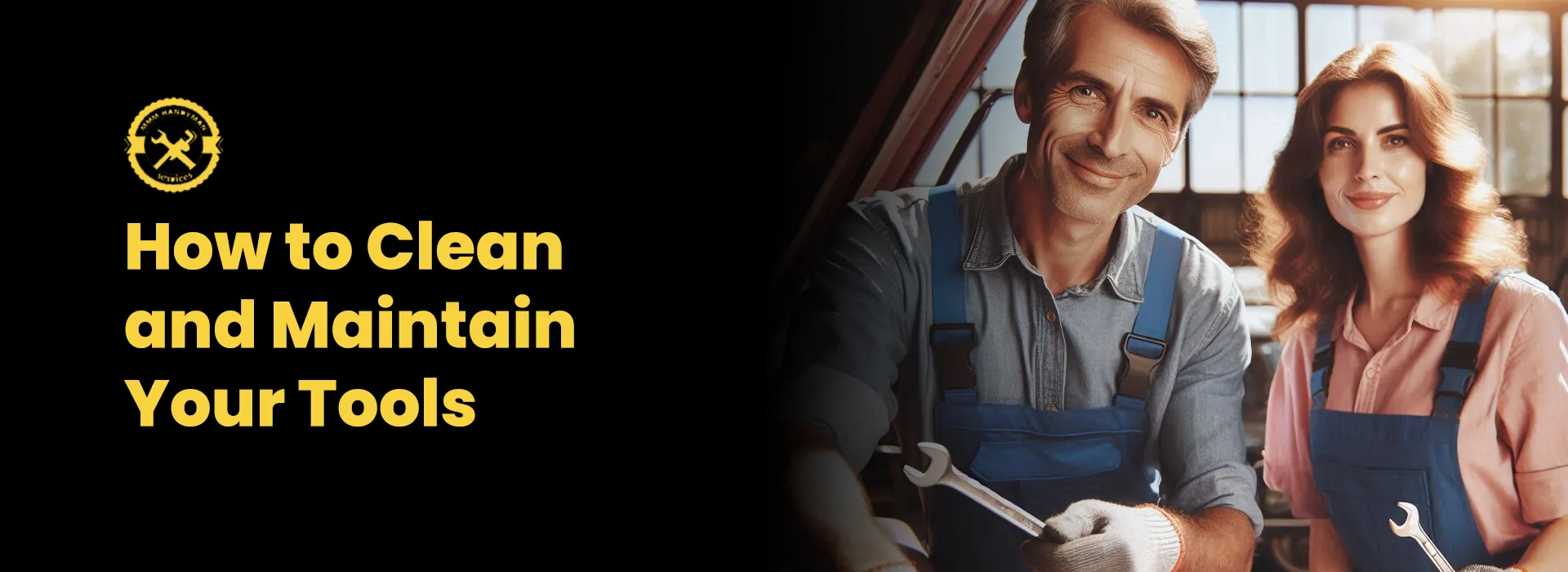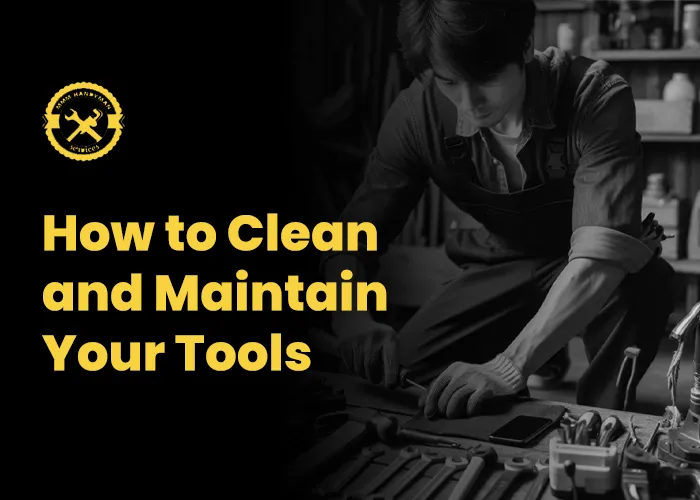
Clean and Maintain Your Tools
Keeping your tools clean and well-maintained not only extends their lifespan but also ensures they function optimally whenever you need them. Whether you’re dealing with simple hand tools or complex power tools, regular cleaning and maintenance can save time, reduce wear and tear, and ultimately make your projects more efficient. Here’s a guide on how to care for your tools.
essential reasons
Regularly cleaning and maintaining your tools is essential for a few key reasons:
1. Extends Tool Lifespan
- Tools that are well-maintained are less prone to wear and tear, rust, and other damage. With proper care, tools last longer, which means you don’t have to replace them as often, saving you money in the long run.
2. Ensures Safety
- Dirty, rusted, or damaged tools can be hazardous. A dull blade, for instance, requires more force to cut, increasing the chance of slips and injuries. Regular maintenance ensures that tools are safe to use, reducing the risk of accidents.
3. Enhances Efficiency and Precision
- Clean, sharp, and well-lubricated tools perform better and help you work faster. For example, a drill with clean vents and a sharp bit will cut through material quickly and accurately, making projects more efficient and reducing physical strain.
4. Reduces Downtime
- Unplanned tool failures slow down work and can lead to frustrating delays. By inspecting tools regularly, you can identify and fix minor issues before they become major problems, ensuring you always have reliable equipment on hand.
5. Saves Money Over Time
- Preventive care costs less than repairs or replacements. A few minutes of cleaning and oiling after each use, for example, can prevent rust and extend the life of the tool, avoiding costly repairs or replacements.
In short, regular tool maintenance is an investment that pays off in safety, performance, and financial savings, making it an essential habit for any professional or DIY enthusiast.

Table of Contents
1. Cleaning Hand Tools
Hand tools, like wrenches, hammers, screwdrivers, and pliers, are commonly used and often overlooked when it comes to maintenance. Proper care for these tools is simple but essential.
- Remove Dirt and Dust: Use a soft cloth or a stiff brush to remove dust, dirt, and other debris that accumulate after use. If there are tight areas, a toothbrush can be helpful for reaching narrow spaces.
- Handle Grease and Oil: If there’s any oil or grease on the tools, wipe them with a rag dipped in soapy water, or a mild degreaser if necessary. Rinse thoroughly and dry them immediately to prevent rust.
- Rust Removal: For rusted tools, apply a rust remover or scrub gently with a wire brush. Another method involves soaking rusty parts in vinegar for a few hours, which helps lift off the rust without causing damage.
- Sharpen and Polish: Tools with cutting edges, like chisels, should be sharpened regularly to keep them in peak condition. Use a sharpening stone or file as needed, and keep the edges protected when not in use.
2. Cleaning Power Tools
Power tools, such as drills, saws, and sanders, have more complex mechanisms and need a bit more care. Cleaning them helps maintain both safety and performance.
- Unplug and Disassemble (if Possible): Before cleaning, ensure the tool is unplugged or the battery is removed to prevent accidental activation. If possible, disassemble parts that can be safely removed for a deeper clean.
- Dust and Debris: Power tools accumulate a lot of dust, especially if they’re used for woodwork or masonry. Use a dry cloth or an air compressor to blow out dust from vents, openings, and other hard-to-reach areas. For stubborn dirt, a soft brush can also be useful.
- Check and Clean Filters: Some power tools have air filters that prevent dust from getting inside. Check these filters regularly and clean or replace them according to the manufacturer’s guidelines.
- Lubricate Moving Parts: For tools with moving components, like circular saws or drills, apply a light coat of oil or lubricant on the metal parts to keep everything running smoothly. Use only recommended lubricants, as others might damage internal parts.
3. Rust Prevention and Storage Tips
Rust is a common problem that can quickly degrade tools, particularly those stored in humid areas. Following these steps can help keep rust at bay:
- Use Oil for Protection: After cleaning, apply a light coat of oil to metal surfaces. This helps prevent moisture from causing rust. Wipe off any excess oil to avoid a greasy build-up.
- Silica Gel or Dehumidifiers: For storage in humid environments, consider using silica gel packets or a small dehumidifier in your tool storage area to absorb moisture and reduce rust risk.
- Proper Storage: Store your tools in a dry, organized space like a tool chest, box, or pegboard. Using designated storage helps keep tools clean, reduces wear and tear, and prevents rust buildup.
4. Routine Maintenance and Inspection
Regular maintenance doesn’t just involve cleaning; it also includes inspecting tools for damage or wear that could cause issues in the future.
- Inspect for Wear and Tear: Look for cracks, worn-down areas, and any loose screws or bolts. Tighten or replace parts as needed. For power tools, check the cords and batteries as well.
- Sharpen Blades: If you use cutting tools, ensure the blades stay sharp. Dull blades are not only inefficient but can also pose safety hazards.
- Replace or Repair Broken Parts: If a tool component is worn out or damaged, either repair it if possible or consider a replacement. Continuing to use broken parts may damage other parts of the tool.
5. Safety Tips
Always use protective gloves when handling sharp or rusty tools, and work in a well-ventilated area, especially when using cleaning chemicals. Taking care of your tools regularly will not only extend their life but also ensure your work remains safe and efficient.

